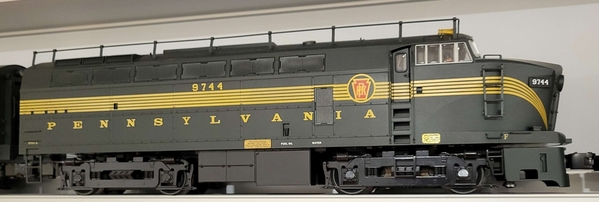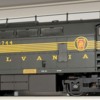Hello,
I am an O Gauge modeler who has recently been trying to model aspects of the Pennsylvania Railroad. PRR diesel engines that have the 5 stripes predominantly pull passenger train consists. In the case of the RF-16 Sharknose, most archival film and pictures show the ones with five stripes also pulling freight consists. Why is that? Did the Sharknose with 5 stripes ever pull Noteworthy passenger trains?
thanks,
R. Scott Kelly








